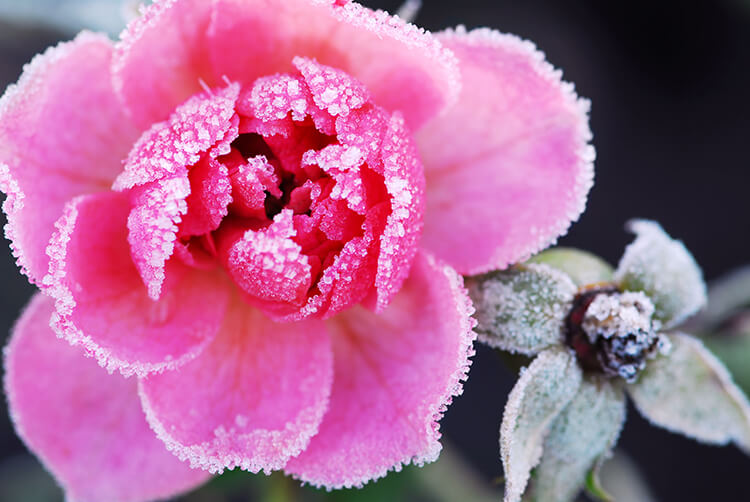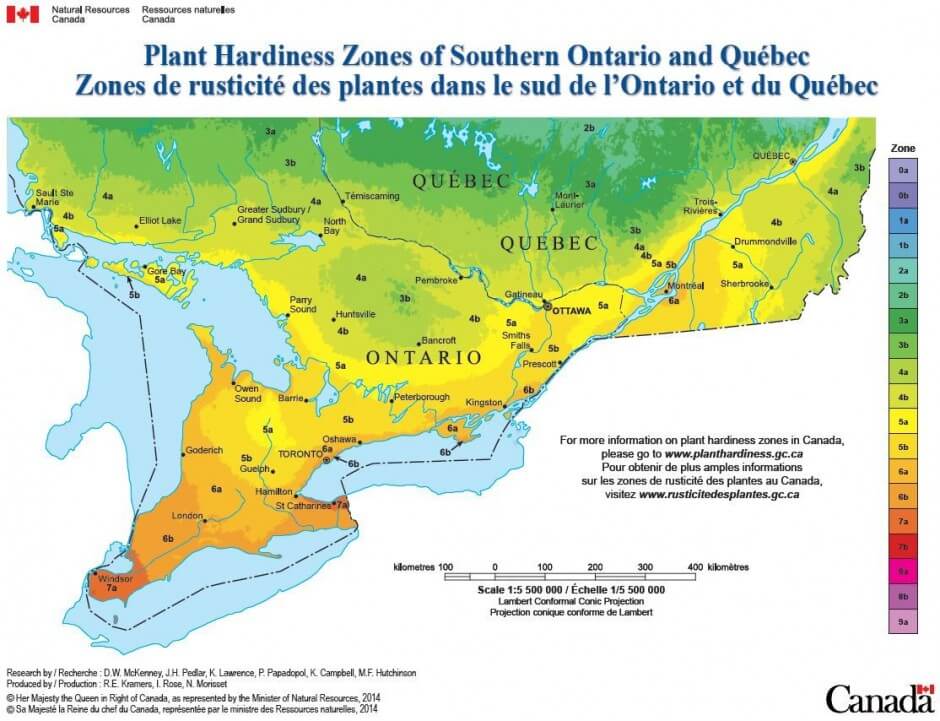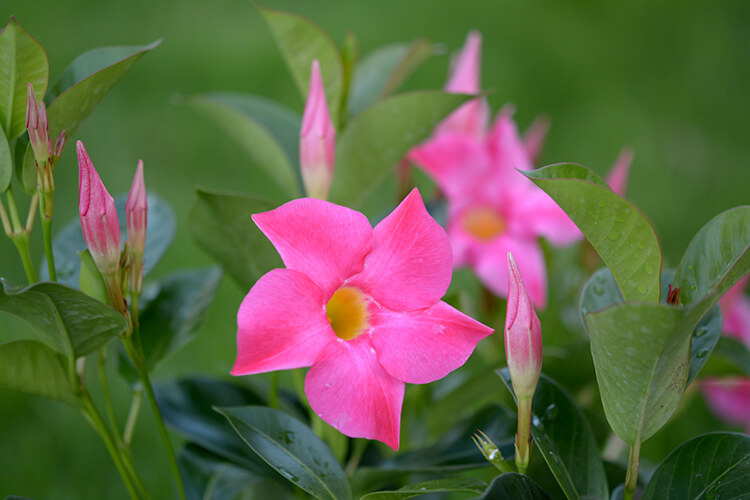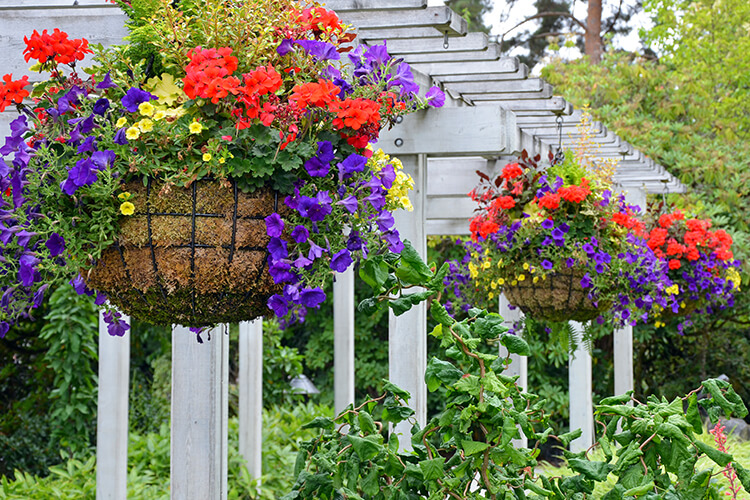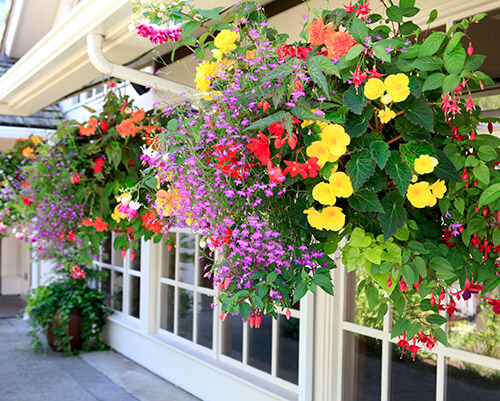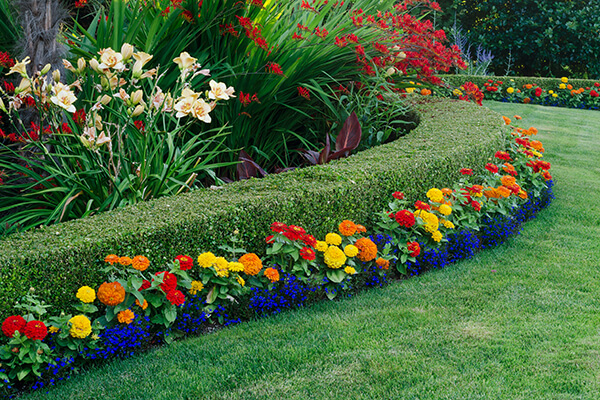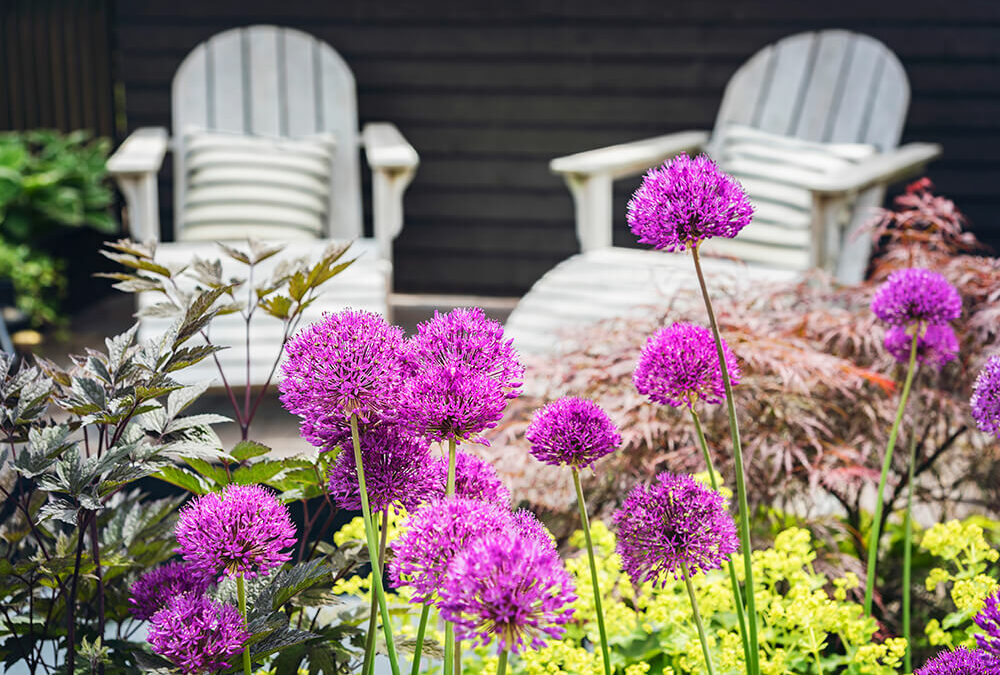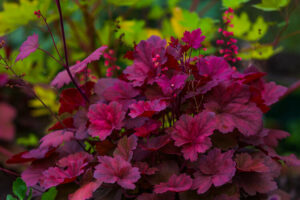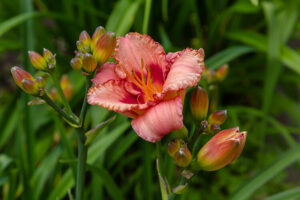
Drought-Tolerant Perennials
When we’re consulting new customers about their goals for new landscaping, “low-maintenance” is typically high on their list of outcomes. One of the key traits that makes a garden low-maintenance is the ability to thrive in dry conditions. And there are plenty of drought-tolerant perennials that fit the bill.
Drier summers like the one we’re experiencing this year can put a lot of stress on plants, trees, and shrubs. This is especially true for plants that are not yet established (newly-planted) and for non-native species and varieties.
But don’t worry, you don’t have to resign yourself to rock gardens with drought-tolerant succulents. There are many beautiful perennials that can weather and even thrive in dry conditions.
Below is a selection of our favourite drought-tolerant plants and flowers suitable for Southwestern Ontario’s hardiness zone (5/6).
Drought Tolerant Perennials for Sunny Locations
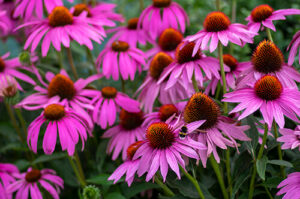 Coneflowers
Coneflowers
Also known as Echinacea, Coneflowers provide pops of (most commonly) vibrant purple with a thistle-like centre that attracts pollinators.
Perennial Grasses
Available in a wide variety of sizes and colours, ornamental grasses add a lot of texture and visual interest to a garden. Be sure to select varieties that are hardy in your zones, as some grasses will not survive our winters and so are better suited to annual planters.
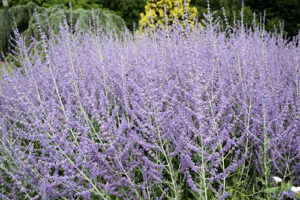 Russian Sage
Russian Sage
This lavender-hued beauty thrives in dry soil and offers a wispy appearance with silvery foliage that is as striking as its flowers.
Daylilies
The ubiquitous Daylily, with all of its available sizes and colours, makes a great, low-maintenance addition to gardens and fence lines.
Sedum
Also referred to as Stonecrop, sedum is a succulent whose light pink, purple, or reddish flower clusters that bloom in late summer and last into the fall. Autumn Joy is a common variety and looks great alongside ethereal grasses.
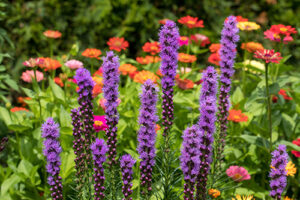 Gayfeather
Gayfeather
Liatris spicata, commonly known as Gayfeather or Blazing Star, is a spreading, upright perennial with vibrant green foliage and spikes of purple, pink, and/or white flowers.
Yarrow
Super easy to grow, Yarrow has fern-like foliage with clusters of small, white or pale-coloured blooms. Plants can be easily split to avoid it taking over your garden.
Drought Tolerant Plants and Flowers for Shady Locations
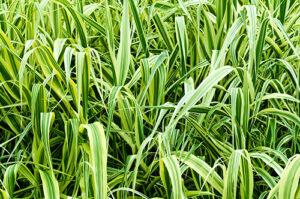 Carex/Sedge
Carex/Sedge
Some varieties of Sedge do well in shady locations. The prominent, grass-like foliage is brightly-coloured and/or variegated, making it an excellent companion for flowering perennials.
Barrenwort
Also known as Longspur or Bishop’s Hat, Barrenwort produces gorgeous, orchid-like flowers on long stems and thrives in low-light areas.
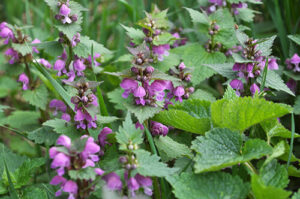 Lamium
Lamium
Part of the mint family, Lamium spreads nicely to provide an interesting ground cover with mottled or variegated leaves and small, orchid-like flowers.
Bleeding Heart
Emerging in the spring, first with foliage followed by blooms, the Bleeding Heart earns its name from the heart-shaped flowers that grow along long, horizontal stems.
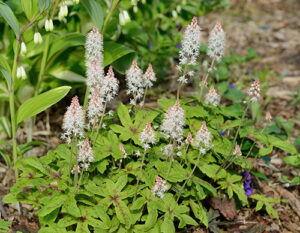 Foamflower
Foamflower
Blooming in the spring, the Foamflower’s bright and sometimes variegated cut-leaf foliage yields to tall sprays of delicate flowers.
Bigroot Geranium
Unlike its upright annual cousin, the perennial Bigroot Geranium remains low and spreads to create a beautiful flowering groundcover that keeps weeds at bay.
So, there are myriad options for gardens in dry conditions. However, if you need assistance with choosing the right combinations for your gardens, contact us.

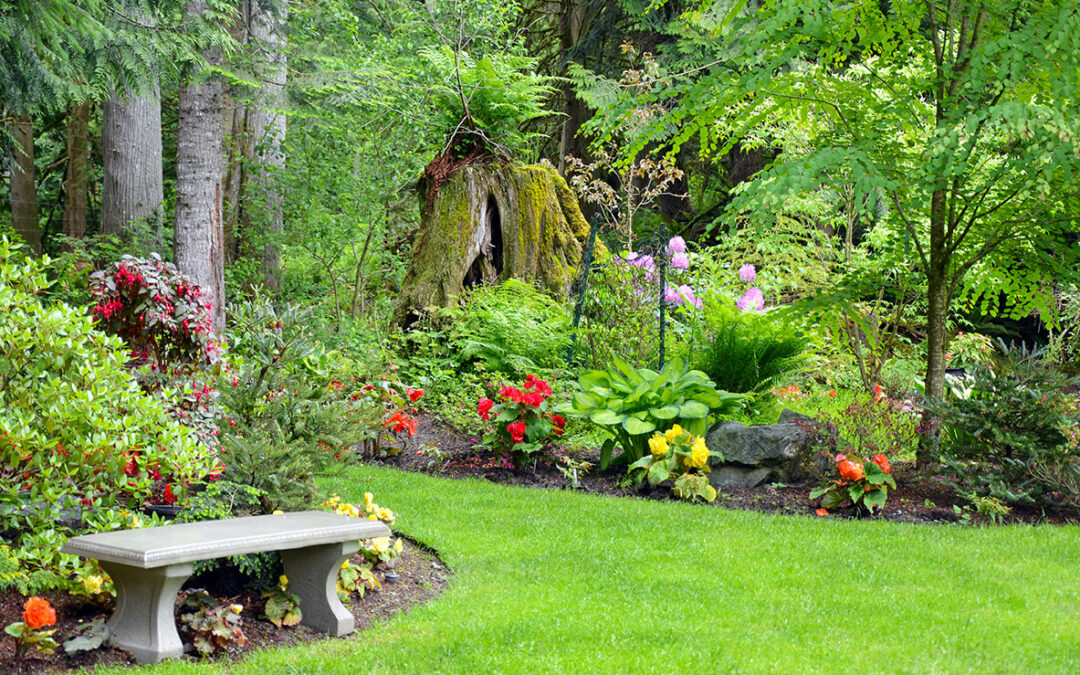
 Boxwood
Boxwood Non-Invasive Honeysuckle
Non-Invasive Honeysuckle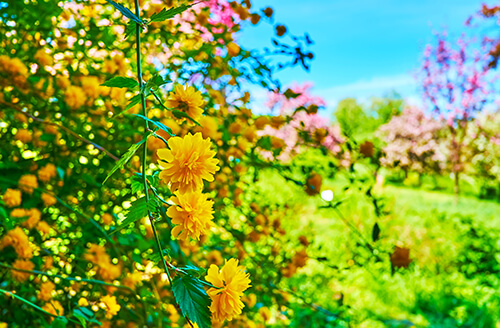 Japanese Rose
Japanese Rose Solomon Seal
Solomon Seal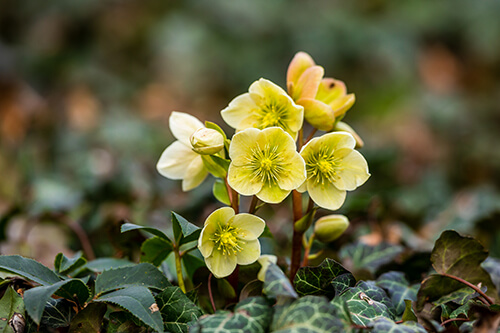 Hellebore
Hellebore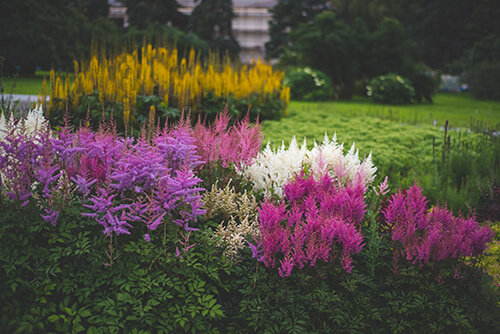 Astilbe
Astilbe
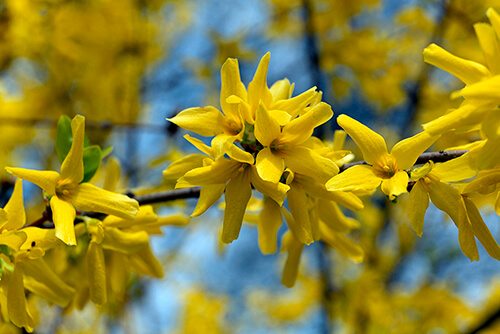 Forsythia – brilliant yellow blooms
Forsythia – brilliant yellow blooms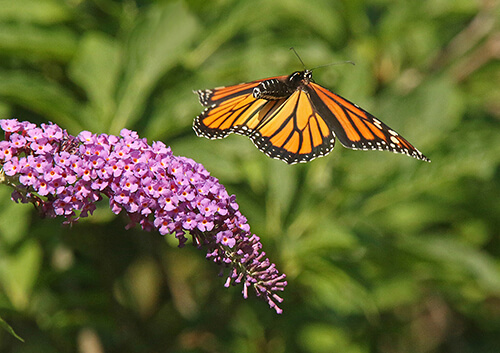 Spirea
Spirea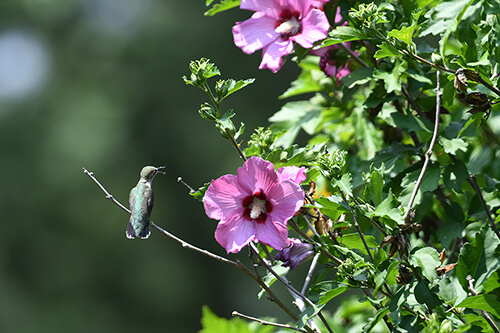 Burning Bush
Burning Bush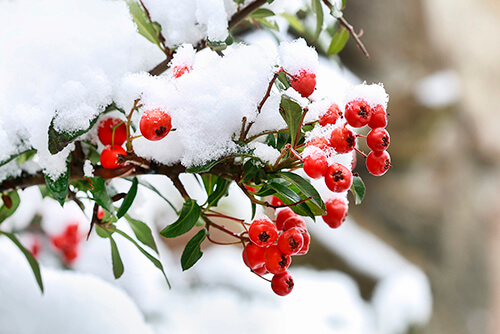 Red Twig Dogwood
Red Twig Dogwood